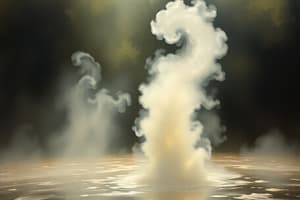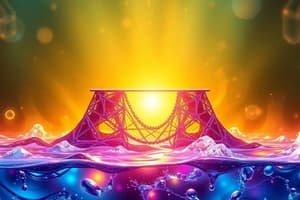Podcast
Questions and Answers
What is vapor-liquid equilibrium?
What is vapor-liquid equilibrium?
Vapor-liquid equilibrium is the state of coexistence between a vapor phase and a liquid phase of a substance.
What are the phases involved in vapor-liquid equilibrium?
What are the phases involved in vapor-liquid equilibrium?
The phases involved are the vapor phase and the liquid phase.
How is the vapor phase formed?
How is the vapor phase formed?
The vapor phase is typically formed by the evaporation or vaporization of the liquid phase.
How is the liquid phase different from the vapor phase?
How is the liquid phase different from the vapor phase?
What are the crucial conditions for vapor-liquid equilibrium?
What are the crucial conditions for vapor-liquid equilibrium?
Flashcards are hidden until you start studying
Study Notes
Vapor-Liquid Equilibrium (VLE)
- VLE, also known as phase equilibrium or equilibrium between phases, is a fundamental concept in thermodynamics and chemical engineering.
Phases Involved
- Vapor Phase: The gaseous phase of a substance, formed by evaporation or vaporization of the liquid phase.
- Liquid Phase: The condensed phase of the substance, where molecules are closely packed and have less kinetic energy compared to the vapor phase.
Equilibrium Conditions
- VLE occurs under specific conditions of temperature and pressure.
- These conditions are crucial in determining the equilibrium state.
Studying That Suits You
Use AI to generate personalized quizzes and flashcards to suit your learning preferences.




